A brief history of Ashtead
Origins
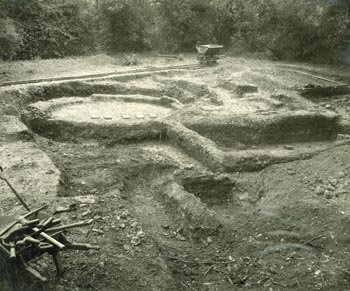 Ashtead means "homestead among the ash trees". Its occupation has been traced back to about 2000BC but the first evidence of a permanent settlement was in Saxon times when the village was called Stede. The Roman road, Stane Street passes through the south east of Ashtead where there is a site of roman occupation near St. Giles Church. There is also the remains of a Roman villa on Ashtead Common which form part of a complex including a bathhouse and tile works. The main period of occupation was AD117-38 however some buildings were first erected on the site in circa AD67-79. In around AD150 the buildings were dismantled and in AD180 the villa was partly rebuilt. The site was abandoned by about AD200. The tile works may have supplied a major market in the South East and was probably the main economy of the villa.
Ashtead means "homestead among the ash trees". Its occupation has been traced back to about 2000BC but the first evidence of a permanent settlement was in Saxon times when the village was called Stede. The Roman road, Stane Street passes through the south east of Ashtead where there is a site of roman occupation near St. Giles Church. There is also the remains of a Roman villa on Ashtead Common which form part of a complex including a bathhouse and tile works. The main period of occupation was AD117-38 however some buildings were first erected on the site in circa AD67-79. In around AD150 the buildings were dismantled and in AD180 the villa was partly rebuilt. The site was abandoned by about AD200. The tile works may have supplied a major market in the South East and was probably the main economy of the villa.
Post Roman period
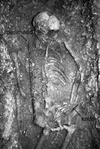 Little is known of the 600 years from the departure of the Romans to the Norman Conquest. It is likely that there was only a small hamlet of 40-50 people living here in Saxon times. Human bones, thought to be Saxon were found in Ermyn Way and the grounds of what as the time, Goblin's works. After death of King Harold at the Battle of Hastings, ownership of Ashtead passed to William the Conqueror's half brother, Odo, Bishop of Bayeaux. Tile making went on in the 14th century and by the Tudor period the population had grown to about 200 people, although this was reduced by about a third by the Black Death. It appears in the Domesday book of 1086 as Stede. It was held by the Canons of Bayeux from the Bishop of Bayeux.
Little is known of the 600 years from the departure of the Romans to the Norman Conquest. It is likely that there was only a small hamlet of 40-50 people living here in Saxon times. Human bones, thought to be Saxon were found in Ermyn Way and the grounds of what as the time, Goblin's works. After death of King Harold at the Battle of Hastings, ownership of Ashtead passed to William the Conqueror's half brother, Odo, Bishop of Bayeaux. Tile making went on in the 14th century and by the Tudor period the population had grown to about 200 people, although this was reduced by about a third by the Black Death. It appears in the Domesday book of 1086 as Stede. It was held by the Canons of Bayeux from the Bishop of Bayeux.
Farming
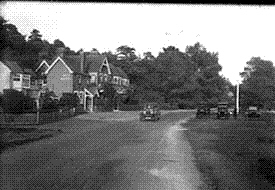 The principal occupation of the area was farming which peaked in the 1850-1860s when there was 5 farms. However the decline started by 1870 with the import of cheap American grain and by the hard winter of 1880/1. The farms switched to livestock but this too was hit by cheap frozen meat from South America. When Mary Howard, whose family owned most of Ashtead at that time sold her property in 1879, developers moved in due to Ashtead's closeness to London. Samuel Pepys record of Ashtead in his diary, "an old place of delight" when he lodged with Farmer Page.
The principal occupation of the area was farming which peaked in the 1850-1860s when there was 5 farms. However the decline started by 1870 with the import of cheap American grain and by the hard winter of 1880/1. The farms switched to livestock but this too was hit by cheap frozen meat from South America. When Mary Howard, whose family owned most of Ashtead at that time sold her property in 1879, developers moved in due to Ashtead's closeness to London. Samuel Pepys record of Ashtead in his diary, "an old place of delight" when he lodged with Farmer Page.
Churches
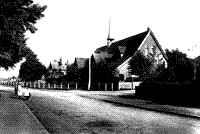 St Giles Church was built in 1125 as a private chapel by the Norman Lord, Lawrence of Rouen and became a church in the 13th century. It stayed much the same until 1839 when it was restored and extended. St Georges Church replaced an Iron Church that was donated in 1882 and was completed in 1906. However further work to extend and enhance the church was undertaken between 1959 and 1964. Further improvements have been made since 1995, in particular a new church hall. The Ashtead Free Church started as the Ashtead Gospel Church in 1895 in another iron church. This was replaced by the current building in 1924. St Michael's Catholic Church started in a large garage of a private house, Mawmead Shaw which had been purchased in 1944. It was pulled down and the current building opened in 1967. The private house, Rushmere behind was also purchased and demolished to make the church hall.
St Giles Church was built in 1125 as a private chapel by the Norman Lord, Lawrence of Rouen and became a church in the 13th century. It stayed much the same until 1839 when it was restored and extended. St Georges Church replaced an Iron Church that was donated in 1882 and was completed in 1906. However further work to extend and enhance the church was undertaken between 1959 and 1964. Further improvements have been made since 1995, in particular a new church hall. The Ashtead Free Church started as the Ashtead Gospel Church in 1895 in another iron church. This was replaced by the current building in 1924. St Michael's Catholic Church started in a large garage of a private house, Mawmead Shaw which had been purchased in 1944. It was pulled down and the current building opened in 1967. The private house, Rushmere behind was also purchased and demolished to make the church hall.
Public Houses
 In the 18th century, Ashtead had 3 pubs all owned by Richard Howard. The Berkshire Arms which disappeared in the 1820's, The Haunch of Venison that transferred its licence to the Leg of Mutton and Cauliflower was on the site of what is now Forest Lodge. The “Leg”, as it is known locally was also a farm until the late 19th century. There is evidence of an earlier pub on that site, The Three Horseshoes between 1655-84. The current building dates back to 1890 but part of the original pub still exists in the rear. In 1839 there was a beer shop on the site of what is now The Brewery which started brewing its on beer in 1871. At about the same time, The Woodman had a rival beer shop which was very popular with the navvies who built the railway. The current building was built in the 1930s. The village still has its 3 pubs but they are no longer tied tenancies but owned by independent companies who employ their own managers. The separate bars have beem knocked into one and the offsales bars have also gone.
In the 18th century, Ashtead had 3 pubs all owned by Richard Howard. The Berkshire Arms which disappeared in the 1820's, The Haunch of Venison that transferred its licence to the Leg of Mutton and Cauliflower was on the site of what is now Forest Lodge. The “Leg”, as it is known locally was also a farm until the late 19th century. There is evidence of an earlier pub on that site, The Three Horseshoes between 1655-84. The current building dates back to 1890 but part of the original pub still exists in the rear. In 1839 there was a beer shop on the site of what is now The Brewery which started brewing its on beer in 1871. At about the same time, The Woodman had a rival beer shop which was very popular with the navvies who built the railway. The current building was built in the 1930s. The village still has its 3 pubs but they are no longer tied tenancies but owned by independent companies who employ their own managers. The separate bars have beem knocked into one and the offsales bars have also gone.
Transport
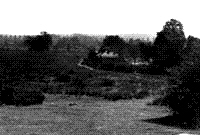 By 1836 there were 12 stagecoaches were travelling through Ashtead but this declined with the arrival of the railway Ashtead in 1859 which was electrified in 1925. The Victorian age saw a resurgence of road use with the arrival of the bicycle and the motorcar. By 1913 there were regular motorbuses coming to Ashtead with day visitors who visited the common and the roman villa excavation. There were teahouses on both sides of the railway, a helter skelter and a further teahouse in Rectory Lane. By 1925 traffic through Ashtead had increased to such an extent a complaint was made to Surrey County Council about the noise. Public transport still thrives with Ashtead Station acquiring a new ticket office in 2012 and the platforms were extended to cope with 10 carriage trains. The footbridge between platforms replaced an earlier brick one. The car park now used by commuters was the goods yard with coal and coke bunkers at the far side used by Astridge the coal merchant. Ashtead has 3 bus services running through it, 479,408 and 21 run by 3 separate companies. Although vital for the community their services do end rather early in the evening.
By 1836 there were 12 stagecoaches were travelling through Ashtead but this declined with the arrival of the railway Ashtead in 1859 which was electrified in 1925. The Victorian age saw a resurgence of road use with the arrival of the bicycle and the motorcar. By 1913 there were regular motorbuses coming to Ashtead with day visitors who visited the common and the roman villa excavation. There were teahouses on both sides of the railway, a helter skelter and a further teahouse in Rectory Lane. By 1925 traffic through Ashtead had increased to such an extent a complaint was made to Surrey County Council about the noise. Public transport still thrives with Ashtead Station acquiring a new ticket office in 2012 and the platforms were extended to cope with 10 carriage trains. The footbridge between platforms replaced an earlier brick one. The car park now used by commuters was the goods yard with coal and coke bunkers at the far side used by Astridge the coal merchant. Ashtead has 3 bus services running through it, 479,408 and 21 run by 3 separate companies. Although vital for the community their services do end rather early in the evening.
Provision of utilities and a public hall
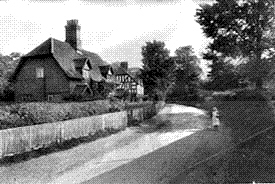 On 3rd November 1924, Sir Rowland Blades opened the much needed Peace Memorial Hall which was built with funds raised from events held in the 1920's. in 1932 the recreation ground in Lower Ashtead was opened. In 1901 Ashtead had its own independent Fire Service but this was merged with Leatherhead in 1926. In the 1880's pumped water arrived supplied by East Surrey Water by its pumping station in Leatherhead. Gas was supplied at about the same time but electricity did not arrive till after 1900. Drainage and sewerage removal also was improved by 1900.
On 3rd November 1924, Sir Rowland Blades opened the much needed Peace Memorial Hall which was built with funds raised from events held in the 1920's. in 1932 the recreation ground in Lower Ashtead was opened. In 1901 Ashtead had its own independent Fire Service but this was merged with Leatherhead in 1926. In the 1880's pumped water arrived supplied by East Surrey Water by its pumping station in Leatherhead. Gas was supplied at about the same time but electricity did not arrive till after 1900. Drainage and sewerage removal also was improved by 1900.
Housing
 Development stepped up a gear with the arrival of the railway and most of the farm land made way for houses for commuters who worked in London. If it hadn't have been for the Green Belt that was created in 1947, all the woodland that we enjoy today would have disappeared and Ashtead would have become another suburb of London. In recent times, the building of the M25 has increased the popularity of Ashtead as a place to live and there has been much "in filling" to maximise the number of houses. There may be some relaxing of the green belt restrictions to provide affordable housing which is in chronic short supply.
Development stepped up a gear with the arrival of the railway and most of the farm land made way for houses for commuters who worked in London. If it hadn't have been for the Green Belt that was created in 1947, all the woodland that we enjoy today would have disappeared and Ashtead would have become another suburb of London. In recent times, the building of the M25 has increased the popularity of Ashtead as a place to live and there has been much "in filling" to maximise the number of houses. There may be some relaxing of the green belt restrictions to provide affordable housing which is in chronic short supply.
Industry
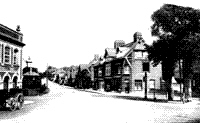 In the early 20th century, Ashtead had a brickworks, a photographic plate and paper production, leather manufacturing and a pottery which operated from 1923-1935 to employ ex-servicemen from the 1st World War even silk making but all have disappeared over the years. In more recent times there was a factory that produced leathercloth for the motor industry located in The Street, originally owned by Brifex and later by Carrington Vyella but that closed in the mid 70's. Goblins were based in Ermyn Way for many years producing electrical goods, including the teasmade but they closed and the site is now owned by Esso. Remploy who employed disabled people to make leather goods have also gone. Prior to them, Thermega used to make electric blankets in that building.
In the early 20th century, Ashtead had a brickworks, a photographic plate and paper production, leather manufacturing and a pottery which operated from 1923-1935 to employ ex-servicemen from the 1st World War even silk making but all have disappeared over the years. In more recent times there was a factory that produced leathercloth for the motor industry located in The Street, originally owned by Brifex and later by Carrington Vyella but that closed in the mid 70's. Goblins were based in Ermyn Way for many years producing electrical goods, including the teasmade but they closed and the site is now owned by Esso. Remploy who employed disabled people to make leather goods have also gone. Prior to them, Thermega used to make electric blankets in that building.
Modern developments
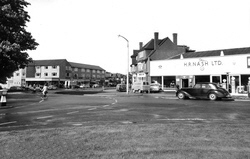 Although all the light industry has gone, the 2 shopping areas in the street and Craddocks Parade still have a loyal following. All four original garages have gone. Blue Star garage, a former Rootes dealership is now a carpet showroom, the Esso petrol station further down the street was knocked down for a Marks & Spencer foodstore, Roundhills, a Vauxhall dealership is used car lot and an independent car maintenance workshop and Nash's Garage which sold Fords now maintains Mercedes Benz cars. None of them sell petrol or diesel. All the banks and building societies have gradually disappeared, leaving just ATMs at the Coop, Post Office and Tescos to get money. The newsagent and television repair shop near the pond has been knocked down and flats built on the site. Ashtead is over endowed with eating places with 2 Indian restaurants, a Thai and a Chinese restaurant as well as 3 fish and Chip shops, a kebab/burger shop, a pizza takeaway and a Thai takeaway.
Although all the light industry has gone, the 2 shopping areas in the street and Craddocks Parade still have a loyal following. All four original garages have gone. Blue Star garage, a former Rootes dealership is now a carpet showroom, the Esso petrol station further down the street was knocked down for a Marks & Spencer foodstore, Roundhills, a Vauxhall dealership is used car lot and an independent car maintenance workshop and Nash's Garage which sold Fords now maintains Mercedes Benz cars. None of them sell petrol or diesel. All the banks and building societies have gradually disappeared, leaving just ATMs at the Coop, Post Office and Tescos to get money. The newsagent and television repair shop near the pond has been knocked down and flats built on the site. Ashtead is over endowed with eating places with 2 Indian restaurants, a Thai and a Chinese restaurant as well as 3 fish and Chip shops, a kebab/burger shop, a pizza takeaway and a Thai takeaway.
Sports and leisure facilities
 Apart from the aforementioned pubs, restaurants and our club, Ashtead is well provided with sports and leisure facilities. Our club has snooker and pool tables as well as darts. There is a Cricket ground, donated by Sir Thomas Lucas in 1887 with a Bowls club behind it and opposite there is the tennis club which borders the recreation ground where the Ashtead Football Club, founded in 1894 have their clubhouse and football pitches. It originally played its home games on the cricket ground, paying the Cricket Club a rent. There is also a Squash club and a hockey club that used the recreation ground for matches. Although Ashtead has no theatre, it has an amateur choral society and amateur dramatics group who use the Peace Memorial Hall for performances. Walkers are also well catered for with Ashtead Common which leads on to Chessington and Malden Rushett, Epsom Common and Epsom Downs with walks to Epsom, Walton on the Hill, Headley and Tadworth and the Roman Road, Stane Street with walks down to Mickleham and Boxhill.
.
Apart from the aforementioned pubs, restaurants and our club, Ashtead is well provided with sports and leisure facilities. Our club has snooker and pool tables as well as darts. There is a Cricket ground, donated by Sir Thomas Lucas in 1887 with a Bowls club behind it and opposite there is the tennis club which borders the recreation ground where the Ashtead Football Club, founded in 1894 have their clubhouse and football pitches. It originally played its home games on the cricket ground, paying the Cricket Club a rent. There is also a Squash club and a hockey club that used the recreation ground for matches. Although Ashtead has no theatre, it has an amateur choral society and amateur dramatics group who use the Peace Memorial Hall for performances. Walkers are also well catered for with Ashtead Common which leads on to Chessington and Malden Rushett, Epsom Common and Epsom Downs with walks to Epsom, Walton on the Hill, Headley and Tadworth and the Roman Road, Stane Street with walks down to Mickleham and Boxhill.
.
Acknowlegements to:
Ashtead, a village transformed edited by Alan A. Jackson
A History of Ashtead edited by J.C. Stuttard
partscape.org.uk
exploringsurreyspast.org.uk
potteryhistories.com
wikapeadia
 Ashtead means "homestead among the ash trees". Its occupation has been traced back to about 2000BC but the first evidence of a permanent settlement was in Saxon times when the village was called Stede. The Roman road, Stane Street passes through the south east of Ashtead where there is a site of roman occupation near St. Giles Church. There is also the remains of a Roman villa on Ashtead Common which form part of a complex including a bathhouse and tile works. The main period of occupation was AD117-38 however some buildings were first erected on the site in circa AD67-79. In around AD150 the buildings were dismantled and in AD180 the villa was partly rebuilt. The site was abandoned by about AD200. The tile works may have supplied a major market in the South East and was probably the main economy of the villa.
Ashtead means "homestead among the ash trees". Its occupation has been traced back to about 2000BC but the first evidence of a permanent settlement was in Saxon times when the village was called Stede. The Roman road, Stane Street passes through the south east of Ashtead where there is a site of roman occupation near St. Giles Church. There is also the remains of a Roman villa on Ashtead Common which form part of a complex including a bathhouse and tile works. The main period of occupation was AD117-38 however some buildings were first erected on the site in circa AD67-79. In around AD150 the buildings were dismantled and in AD180 the villa was partly rebuilt. The site was abandoned by about AD200. The tile works may have supplied a major market in the South East and was probably the main economy of the villa. Little is known of the 600 years from the departure of the Romans to the Norman Conquest. It is likely that there was only a small hamlet of 40-50 people living here in Saxon times. Human bones, thought to be Saxon were found in Ermyn Way and the grounds of what as the time, Goblin's works. After death of King Harold at the Battle of Hastings, ownership of Ashtead passed to William the Conqueror's half brother, Odo, Bishop of Bayeaux. Tile making went on in the 14th century and by the Tudor period the population had grown to about 200 people, although this was reduced by about a third by the Black Death. It appears in the Domesday book of 1086 as Stede. It was held by the Canons of Bayeux from the Bishop of Bayeux.
Little is known of the 600 years from the departure of the Romans to the Norman Conquest. It is likely that there was only a small hamlet of 40-50 people living here in Saxon times. Human bones, thought to be Saxon were found in Ermyn Way and the grounds of what as the time, Goblin's works. After death of King Harold at the Battle of Hastings, ownership of Ashtead passed to William the Conqueror's half brother, Odo, Bishop of Bayeaux. Tile making went on in the 14th century and by the Tudor period the population had grown to about 200 people, although this was reduced by about a third by the Black Death. It appears in the Domesday book of 1086 as Stede. It was held by the Canons of Bayeux from the Bishop of Bayeux. The principal occupation of the area was farming which peaked in the 1850-1860s when there was 5 farms. However the decline started by 1870 with the import of cheap American grain and by the hard winter of 1880/1. The farms switched to livestock but this too was hit by cheap frozen meat from South America. When Mary Howard, whose family owned most of Ashtead at that time sold her property in 1879, developers moved in due to Ashtead's closeness to London. Samuel Pepys record of Ashtead in his diary, "an old place of delight" when he lodged with Farmer Page.
The principal occupation of the area was farming which peaked in the 1850-1860s when there was 5 farms. However the decline started by 1870 with the import of cheap American grain and by the hard winter of 1880/1. The farms switched to livestock but this too was hit by cheap frozen meat from South America. When Mary Howard, whose family owned most of Ashtead at that time sold her property in 1879, developers moved in due to Ashtead's closeness to London. Samuel Pepys record of Ashtead in his diary, "an old place of delight" when he lodged with Farmer Page. St Giles Church was built in 1125 as a private chapel by the Norman Lord, Lawrence of Rouen and became a church in the 13th century. It stayed much the same until 1839 when it was restored and extended. St Georges Church replaced an Iron Church that was donated in 1882 and was completed in 1906. However further work to extend and enhance the church was undertaken between 1959 and 1964. Further improvements have been made since 1995, in particular a new church hall. The Ashtead Free Church started as the Ashtead Gospel Church in 1895 in another iron church. This was replaced by the current building in 1924. St Michael's Catholic Church started in a large garage of a private house, Mawmead Shaw which had been purchased in 1944. It was pulled down and the current building opened in 1967. The private house, Rushmere behind was also purchased and demolished to make the church hall.
St Giles Church was built in 1125 as a private chapel by the Norman Lord, Lawrence of Rouen and became a church in the 13th century. It stayed much the same until 1839 when it was restored and extended. St Georges Church replaced an Iron Church that was donated in 1882 and was completed in 1906. However further work to extend and enhance the church was undertaken between 1959 and 1964. Further improvements have been made since 1995, in particular a new church hall. The Ashtead Free Church started as the Ashtead Gospel Church in 1895 in another iron church. This was replaced by the current building in 1924. St Michael's Catholic Church started in a large garage of a private house, Mawmead Shaw which had been purchased in 1944. It was pulled down and the current building opened in 1967. The private house, Rushmere behind was also purchased and demolished to make the church hall. In the 18th century, Ashtead had 3 pubs all owned by Richard Howard. The Berkshire Arms which disappeared in the 1820's, The Haunch of Venison that transferred its licence to the Leg of Mutton and Cauliflower was on the site of what is now Forest Lodge. The “Leg”, as it is known locally was also a farm until the late 19th century. There is evidence of an earlier pub on that site, The Three Horseshoes between 1655-84. The current building dates back to 1890 but part of the original pub still exists in the rear. In 1839 there was a beer shop on the site of what is now The Brewery which started brewing its on beer in 1871. At about the same time, The Woodman had a rival beer shop which was very popular with the navvies who built the railway. The current building was built in the 1930s. The village still has its 3 pubs but they are no longer tied tenancies but owned by independent companies who employ their own managers. The separate bars have beem knocked into one and the offsales bars have also gone.
In the 18th century, Ashtead had 3 pubs all owned by Richard Howard. The Berkshire Arms which disappeared in the 1820's, The Haunch of Venison that transferred its licence to the Leg of Mutton and Cauliflower was on the site of what is now Forest Lodge. The “Leg”, as it is known locally was also a farm until the late 19th century. There is evidence of an earlier pub on that site, The Three Horseshoes between 1655-84. The current building dates back to 1890 but part of the original pub still exists in the rear. In 1839 there was a beer shop on the site of what is now The Brewery which started brewing its on beer in 1871. At about the same time, The Woodman had a rival beer shop which was very popular with the navvies who built the railway. The current building was built in the 1930s. The village still has its 3 pubs but they are no longer tied tenancies but owned by independent companies who employ their own managers. The separate bars have beem knocked into one and the offsales bars have also gone. By 1836 there were 12 stagecoaches were travelling through Ashtead but this declined with the arrival of the railway Ashtead in 1859 which was electrified in 1925. The Victorian age saw a resurgence of road use with the arrival of the bicycle and the motorcar. By 1913 there were regular motorbuses coming to Ashtead with day visitors who visited the common and the roman villa excavation. There were teahouses on both sides of the railway, a helter skelter and a further teahouse in Rectory Lane. By 1925 traffic through Ashtead had increased to such an extent a complaint was made to Surrey County Council about the noise. Public transport still thrives with Ashtead Station acquiring a new ticket office in 2012 and the platforms were extended to cope with 10 carriage trains. The footbridge between platforms replaced an earlier brick one. The car park now used by commuters was the goods yard with coal and coke bunkers at the far side used by Astridge the coal merchant. Ashtead has 3 bus services running through it, 479,408 and 21 run by 3 separate companies. Although vital for the community their services do end rather early in the evening.
By 1836 there were 12 stagecoaches were travelling through Ashtead but this declined with the arrival of the railway Ashtead in 1859 which was electrified in 1925. The Victorian age saw a resurgence of road use with the arrival of the bicycle and the motorcar. By 1913 there were regular motorbuses coming to Ashtead with day visitors who visited the common and the roman villa excavation. There were teahouses on both sides of the railway, a helter skelter and a further teahouse in Rectory Lane. By 1925 traffic through Ashtead had increased to such an extent a complaint was made to Surrey County Council about the noise. Public transport still thrives with Ashtead Station acquiring a new ticket office in 2012 and the platforms were extended to cope with 10 carriage trains. The footbridge between platforms replaced an earlier brick one. The car park now used by commuters was the goods yard with coal and coke bunkers at the far side used by Astridge the coal merchant. Ashtead has 3 bus services running through it, 479,408 and 21 run by 3 separate companies. Although vital for the community their services do end rather early in the evening. On 3rd November 1924, Sir Rowland Blades opened the much needed Peace Memorial Hall which was built with funds raised from events held in the 1920's. in 1932 the recreation ground in Lower Ashtead was opened. In 1901 Ashtead had its own independent Fire Service but this was merged with Leatherhead in 1926. In the 1880's pumped water arrived supplied by East Surrey Water by its pumping station in Leatherhead. Gas was supplied at about the same time but electricity did not arrive till after 1900. Drainage and sewerage removal also was improved by 1900.
On 3rd November 1924, Sir Rowland Blades opened the much needed Peace Memorial Hall which was built with funds raised from events held in the 1920's. in 1932 the recreation ground in Lower Ashtead was opened. In 1901 Ashtead had its own independent Fire Service but this was merged with Leatherhead in 1926. In the 1880's pumped water arrived supplied by East Surrey Water by its pumping station in Leatherhead. Gas was supplied at about the same time but electricity did not arrive till after 1900. Drainage and sewerage removal also was improved by 1900. Development stepped up a gear with the arrival of the railway and most of the farm land made way for houses for commuters who worked in London. If it hadn't have been for the Green Belt that was created in 1947, all the woodland that we enjoy today would have disappeared and Ashtead would have become another suburb of London. In recent times, the building of the M25 has increased the popularity of Ashtead as a place to live and there has been much "in filling" to maximise the number of houses. There may be some relaxing of the green belt restrictions to provide affordable housing which is in chronic short supply.
Development stepped up a gear with the arrival of the railway and most of the farm land made way for houses for commuters who worked in London. If it hadn't have been for the Green Belt that was created in 1947, all the woodland that we enjoy today would have disappeared and Ashtead would have become another suburb of London. In recent times, the building of the M25 has increased the popularity of Ashtead as a place to live and there has been much "in filling" to maximise the number of houses. There may be some relaxing of the green belt restrictions to provide affordable housing which is in chronic short supply.  In the early 20th century, Ashtead had a brickworks, a photographic plate and paper production, leather manufacturing and a pottery which operated from 1923-1935 to employ ex-servicemen from the 1st World War even silk making but all have disappeared over the years. In more recent times there was a factory that produced leathercloth for the motor industry located in The Street, originally owned by Brifex and later by Carrington Vyella but that closed in the mid 70's. Goblins were based in Ermyn Way for many years producing electrical goods, including the teasmade but they closed and the site is now owned by Esso. Remploy who employed disabled people to make leather goods have also gone. Prior to them, Thermega used to make electric blankets in that building.
In the early 20th century, Ashtead had a brickworks, a photographic plate and paper production, leather manufacturing and a pottery which operated from 1923-1935 to employ ex-servicemen from the 1st World War even silk making but all have disappeared over the years. In more recent times there was a factory that produced leathercloth for the motor industry located in The Street, originally owned by Brifex and later by Carrington Vyella but that closed in the mid 70's. Goblins were based in Ermyn Way for many years producing electrical goods, including the teasmade but they closed and the site is now owned by Esso. Remploy who employed disabled people to make leather goods have also gone. Prior to them, Thermega used to make electric blankets in that building. Although all the light industry has gone, the 2 shopping areas in the street and Craddocks Parade still have a loyal following. All four original garages have gone. Blue Star garage, a former Rootes dealership is now a carpet showroom, the Esso petrol station further down the street was knocked down for a Marks & Spencer foodstore, Roundhills, a Vauxhall dealership is used car lot and an independent car maintenance workshop and Nash's Garage which sold Fords now maintains Mercedes Benz cars. None of them sell petrol or diesel. All the banks and building societies have gradually disappeared, leaving just ATMs at the Coop, Post Office and Tescos to get money. The newsagent and television repair shop near the pond has been knocked down and flats built on the site. Ashtead is over endowed with eating places with 2 Indian restaurants, a Thai and a Chinese restaurant as well as 3 fish and Chip shops, a kebab/burger shop, a pizza takeaway and a Thai takeaway.
Although all the light industry has gone, the 2 shopping areas in the street and Craddocks Parade still have a loyal following. All four original garages have gone. Blue Star garage, a former Rootes dealership is now a carpet showroom, the Esso petrol station further down the street was knocked down for a Marks & Spencer foodstore, Roundhills, a Vauxhall dealership is used car lot and an independent car maintenance workshop and Nash's Garage which sold Fords now maintains Mercedes Benz cars. None of them sell petrol or diesel. All the banks and building societies have gradually disappeared, leaving just ATMs at the Coop, Post Office and Tescos to get money. The newsagent and television repair shop near the pond has been knocked down and flats built on the site. Ashtead is over endowed with eating places with 2 Indian restaurants, a Thai and a Chinese restaurant as well as 3 fish and Chip shops, a kebab/burger shop, a pizza takeaway and a Thai takeaway.  Apart from the aforementioned pubs, restaurants and our club, Ashtead is well provided with sports and leisure facilities. Our club has snooker and pool tables as well as darts. There is a Cricket ground, donated by Sir Thomas Lucas in 1887 with a Bowls club behind it and opposite there is the tennis club which borders the recreation ground where the Ashtead Football Club, founded in 1894 have their clubhouse and football pitches. It originally played its home games on the cricket ground, paying the Cricket Club a rent. There is also a Squash club and a hockey club that used the recreation ground for matches. Although Ashtead has no theatre, it has an amateur choral society and amateur dramatics group who use the Peace Memorial Hall for performances. Walkers are also well catered for with Ashtead Common which leads on to Chessington and Malden Rushett, Epsom Common and Epsom Downs with walks to Epsom, Walton on the Hill, Headley and Tadworth and the Roman Road, Stane Street with walks down to Mickleham and Boxhill.
.
Apart from the aforementioned pubs, restaurants and our club, Ashtead is well provided with sports and leisure facilities. Our club has snooker and pool tables as well as darts. There is a Cricket ground, donated by Sir Thomas Lucas in 1887 with a Bowls club behind it and opposite there is the tennis club which borders the recreation ground where the Ashtead Football Club, founded in 1894 have their clubhouse and football pitches. It originally played its home games on the cricket ground, paying the Cricket Club a rent. There is also a Squash club and a hockey club that used the recreation ground for matches. Although Ashtead has no theatre, it has an amateur choral society and amateur dramatics group who use the Peace Memorial Hall for performances. Walkers are also well catered for with Ashtead Common which leads on to Chessington and Malden Rushett, Epsom Common and Epsom Downs with walks to Epsom, Walton on the Hill, Headley and Tadworth and the Roman Road, Stane Street with walks down to Mickleham and Boxhill.
.